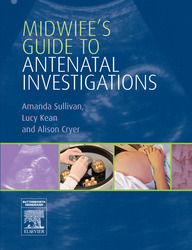「重要なお知らせ:日本語書籍をご購入いただき、eLibraryをご利用の皆さまへ」
エルゼビアは、より快適にサービスをご利用いただくため、システムの重要なアップデートを実施いたします。
現在eLibraryで日本語電子書籍をご利用のお客様は、今後より高いアクセシビリティとセキュリティを備えた新しいプラットフォーム「eBooks+」へアカウントが2025年11月中旬から下旬に移行されます。
お客様ご自身でのお手続きは不要です。ご利用中のコンテンツはすべて自動的に移行され、移行作業が完了次第、自動的にeBooks+へリダイレクトされます。
Book Description
This book serves as a guide to a comprehensive range of diagnostic screenings and tests used during pregnancy. It links routine antenatal care with specialist investigations, describing when follow up is required and how to interpret the results. Designed for ease of reference, this resource helps midwives make informed, evidence-based clinical decisions. It also provides guidance about how best to discuss sensitive issues with mothers and how to provide support to parents receiving bad news. This book is an essential resource for midwives and other health professionals involved in delivering antenatal care to women and their families. Expert contributors ensure that the information is reliable and up-to-date, and the easy-to-use format guides practitioners through each procedure, interpretation of results, and appropriate interventions.
- The only book of its kind, developed to provide midwives with a comprehensive guide to antenatal investigations in an accessible format.
- Includes a range of clinical scenarios and considers the parents' point of view, which brings the tests to life and helps midwives understand the clinical application and impact of investigations.
- A chapter written by the national charity ARC (Antenatal Results and Choices) relates first-hand accounts from parents whose newborns have been diagnosed with an abnormality, providing insight into how best to provide sensitive care to parents facing difficult situations.
- Extensive illustrations, diagrams, summary tables and ultrasound scan images make the information in the book clear and understandable.
- Best practice guidance from National Screening Committee (NSC) are provided to ensure all practitioners are aware of the NSC policy.
- Clinical guidance is supported by explanations of common and specialist terminology and developments in technology.
- The fundamental principles underlying genetic and chromosomal testing are described.
- The historical and cultural aspects of antenatal investigations are discussed, as well as the potential impact of these technologies on the future role of the midwife.


 (0 rating)
(0 rating) 





